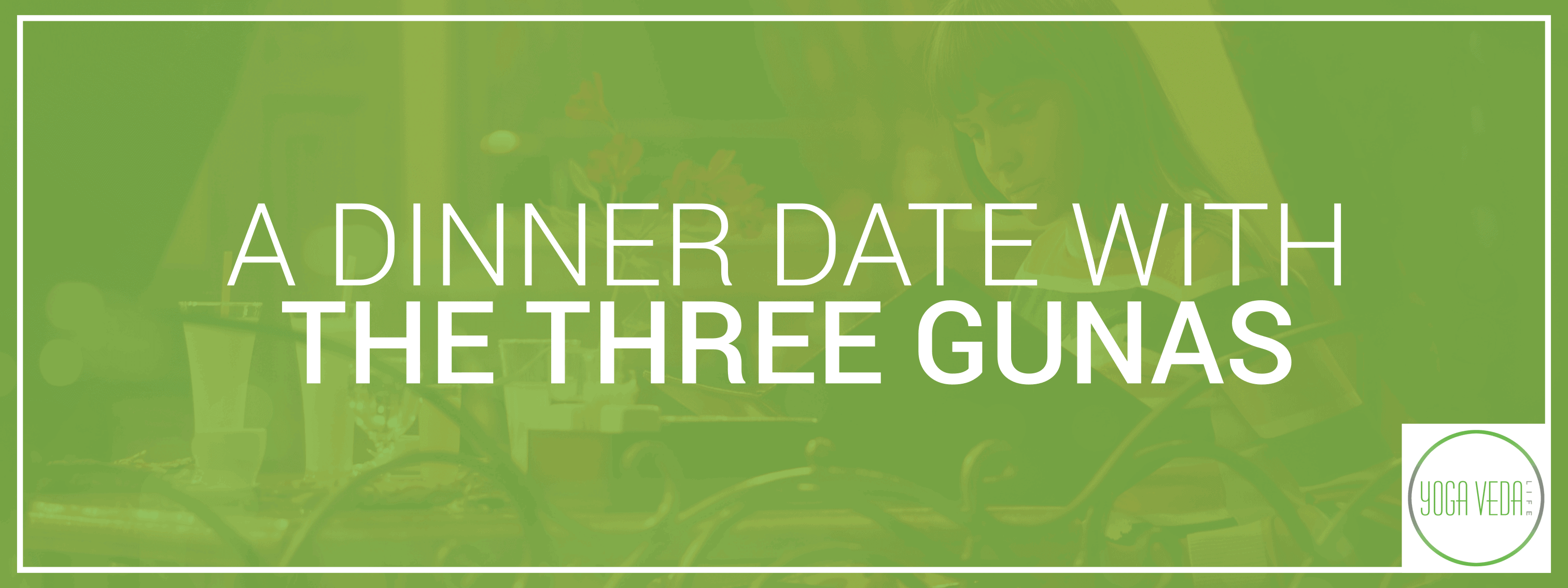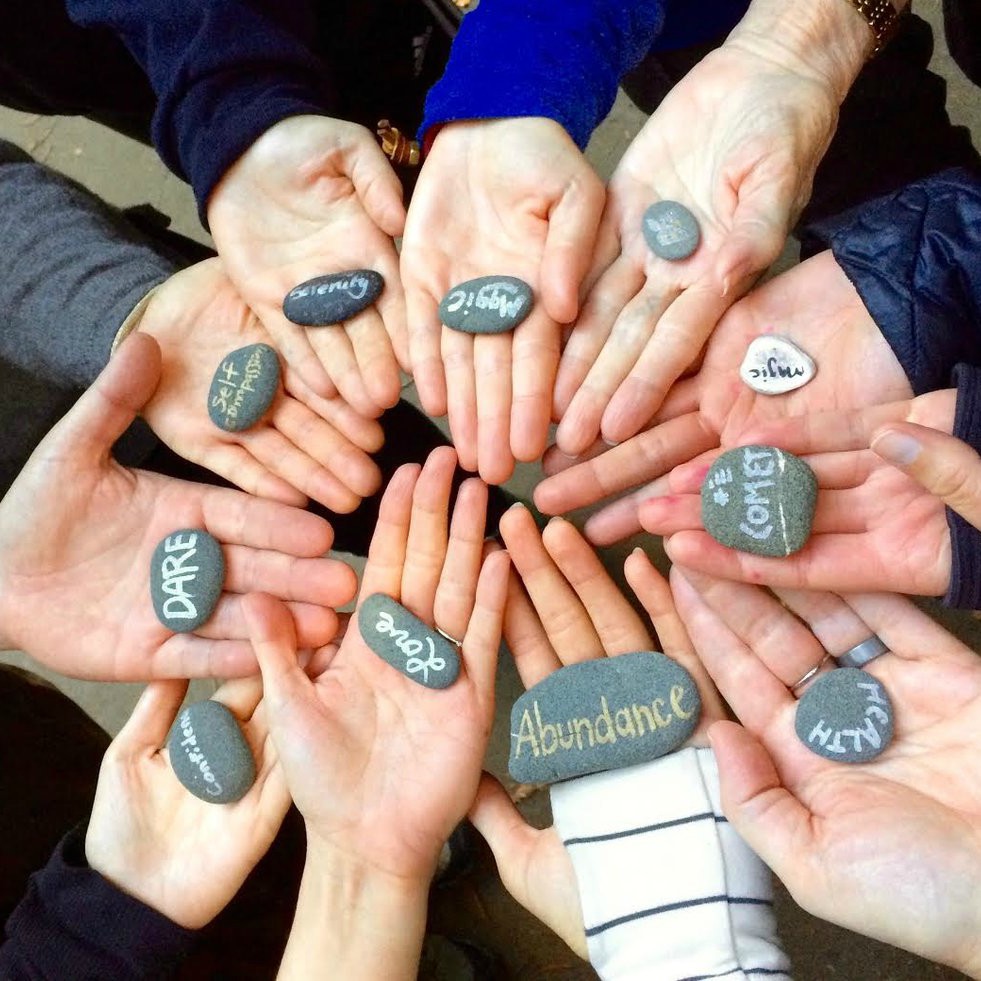A Dinner Date With The Three Gunas

Introducing Tamas, Rajas, and Sattva
Author: Marlee Osborn
Imagine you’re going to dinner with three of your friends. You arrive at the restaurant first and glance at the menu while you wait.
Your first friend arrives. She’s wearing a black sweater and baggy pants that cover up her figure. She’s hunched over and staring at the ground with glazed-over eyes. It feels like there’s a raincloud hanging over her head. She sits at the far end of your table and mumbles a hello.
This friend is called Tamas.
Before you’ve had a chance to reply, the door swings open. Your second friend bursts into the restaurant, wearing bright clothes. She scans the room, her eyes darting from corner to corner, seeking you out. When she spots you, she rushes over and takes a seat opposite Tamas.
As soon as she sits down, words spill out of her. She waves her hands violently as she talks, sharing anecdotes about molehills she’s turned into mountains.
This friend is called Rajas.
Last but not least, your third friend arrives. She glides through the door, dressed in a light pastel dress. Her eyes are open and she’s smiling. It’s as if she already knew where you were sitting.
She places herself between Tamas and Rajas without making a sound. She radiates peace and tranquility, so much so that her presence alone seems to have calmed Rajas and given Tamas a boost.
This friend is called Sattva.
The Three Gunas. These “friends” are the three gunas. They are present in everything in varying amounts.
- Tamas is a state of darkness. It’s associated with excessive sleeping, overeating, ignorance, and passivity.
- Rajas is a state of energy. It’s associated with overworking, overstimulation, action, and change.
- Sattva is a state of harmony. It’s associated with balance, intelligence, clarity, and joy.
While all three gunas are necessary and present in everything in varying amounts, the goal is to see through Sattvic eyes.
This is where Ayurveda comes in.
We can use an Ayurvedic approach to increase and decrease the amounts of the three gunas in ourselves and in our lives to move towards a Sattvic state. When do this, we move towards self-awareness, clarity, health, and wellness. We move towards balance.
Wouldn’t you like to be more like Sattva?
Ama in Ayurveda
In the realm of Ayurvedic medicine, the concept of Ama—undigested material—is pivotal for understanding the genesis of disease and the maintenance of health. Rooted in centuries-old texts, this principle offers insights into the systemic imbalances that contribute to...

Rasayānas: Why detoxing is only half the work
Detoxing has been all the rage the last decade or so. We at yoga veda are totally for this trend. However (and it’s a rather important however), it really doesn’t stop there. In ayurveda detox programs called Panchakarma पंचकर्म are temporary measures used to...

5 Tangible Ways to Practice Yogic Philosophy
The roots of yoga go back thousands of years and yogic philosophy has emerged from so many different texts over the years that the number of teachings is overwhelmingly big. It can be easy to get lost in philosophising and not be sure on how to apply them to our lives...



